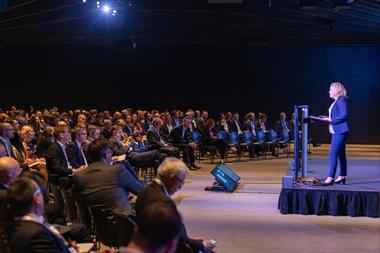Arguably, infrastructure investors need to start modelling physical climate risk now – and some solutions are already here. Elisabeth Jeffries reports
Wind farm developers made a smart decision when they relocated a planned substation to high ground to minimise flooding. Investigations showed that siting it according to an original plan would have involved shutting it down during the wet season, reducing energy production and income. In the event of a major flood, the substation would have needed to be rebuilt, amounting to around 10% of total development cost. By contrast, changing the site cost less than 1% of overall development cost, and generated materially significant financial returns.
The outcome of these appraisals was positive. Nevertheless, all these calculations depended on climate scenarios and hypothetical concepts. Whether the substation would have actually been flooded in its original location will never been known, while the climate change variables incorporated into the estimates are based on forward-looking assumptions.
Despite the intricacy of this aspect of the modelling required, a group of institutional investors has been preparing the launch of a tool that would enable investment decisions based on precisely these types of factors. Known as the Physical Risk Climate Assessment Methodology (PCRAM), it prioritises the integration of climate resilience into asset appraisal. This helps an entity prepare for, respond to and recover from the effects of climate change.
Devised by experts from the investment and environmental sector and fostered by the Institutional Investors Group on Climate Change (IIGCC), PCRAM transforms the financial calculations underpinning conventional asset economics. For instance, it evaluates the cost of ignoring climate, an unusual calculation at present.
“Current models may include a climate risk assessment but do not include the cost of doing nothing”
John Rabba
John Rabba, head of asset climate and environment, social and governance (ESG) at environmental consultancy Mott Macdonald, which advised on PCRAM, says: “Current models may include a climate risk assessment but do not include the cost of doing nothing. So you don’t actually quantify the impacts of climate change on future revenues and on the value of assets. This is a significant innovation in PCRAM.”
In recent decades, of course, climate change rarely appeared on the agenda, so this premise for financial evaluations would need to be accepted across the financial sector for PCRAM to take off. When climate does appear now it plays a passive role in asset finance, says Rabba. “Currently, a climate risk assessment is completed as a check… after the asset is assessed rather than being integral to the financial analysis,” he says.
But Rabba and his colleagues at Mott Macdonald and WTW have set out to craft a new pathway for investment firms to integrate climate issues using PCRAM. “Part of this is making sure climate risks are embedded upfront into the decision making”, he says. In many cases, it generates a completely different internal rate of return (IRR) and net present value (NPV) than would be found from conventional asset valuations and transactions. It is also more positive than climate risk assessments because it goes further. “Infrastructure investors might look at the change in capex that might be needed to build resilience but wouldn’t necessarily run scenarios and look at the benefits in the cashflow model,” he says.
Most show little interest in climate change. In infrastructure investment, asset delivery and management decisions are driven by a handful of key parameters that decision-makers attempt to optimise. These are usually primarily influenced by the desire to minimise capex, opex and schedule while delivering infrastructure assets that do not pose a risk on the lives and wellbeing of communities they are designed to serve. Asset functionality and durability top the list of considerations, alongside compliance with regulatory frameworks.
Climate resilience advocates say this is inadequate. What is more, they suggest, including climate variables into the economic modelling could add value in future, as well as preventing value destruction. That means considering cost avoidance, which is usually only incorporated in a limited way at present by looking at additional expenditure to protect assets against the elements.
Currently, safeguards against climate change might be taken into account and paid for, says John Rabba, “but this would be more from a risk and cost basis than actually modelling the impacts in terms of the financial impact and financial benefits”. The range of resilience options is also often ignored. Used effectively, PCRAM would generate solutions that allowed the integration of a variety of outcomes.

Investment firms that do consider climate risk mitigation might just choose a single solution, such as raising a data centre off the ground to protect the asset from risk of a rising flood plain level. However, more astute options are available, says Erik Landry, climate change director at benchmark provider GRESB. “If you were to construct the base of a data centre so that it was easier to raise in the future should you need to, that’s not simply a mitigation option, that’s a resilience option, because it allows you to more easily pivot and change your strategy going forward,” he says.
PCRAM contains far more variables than a typical asset appraisal currently would. This means reviewing basic assumptions, such as the lifetime of the asset, because the range of resilience options might affect its durability. However, it does not consist of a new methodology; appraisals are based on the same economic principles. “The financial inputs and cashflow models don’t really change much compared to business as usual. It’s more that how you intend to operate the asset will change”, says Landry.
The challenge of known unknowns
Though it does provide a fuller picture, PCRAM is a challenging tool. Uncertainties and forecasts need to be taken into account in order to make use of it. “Investors using PCRAM are not assuming that what has been will always be. They are questioning the idea that, for example, because an asset is not flooded or in a range of a severe flood now it doesn’t mean that couldn’t change over the next couple of decades,” says Landry. “So with that greater understanding – of considerations you are not necessarily exposed to now but could be exposed to – you might need to make decisions now to allow you to fare better in different scenarios.”
Thus far, few institutional investors have adopted PCRAM, which is still at pilot stage. An updated version of PCRAM adjusting to the findings of pilots is due in 2025. As Landry points out, it faces many barriers, of which uncertainty is probably the greatest. “The financial quantification of uncertainty is not an easy task, and even when it is quantified how to progress in the face of it is not really clear”, he says. However, building in flexibility in the face of uncertainty is a wise approach, he argues. “The whole point of resilience is not that you know something bad is going to happen, it’s that you are more prepared for a variety of distinct and different bad outcomes.”
PCRAM is also more complex than existing tools, as it is multidisciplinary. Experts consulted could range from climate scientists to data engineers, asset owners, asset managers and financial practitioners. Local stakeholders are involved. “You have to not only manage a wide variety of project participants but you also have to ensure buy-in, clear communications and especially alignment of key objectives and responsibilities”, says Landry.
The iterative character of PCRAM is another significant barrier to its use. Emerging new data needs to be included, and findings updated. The process is repeated and evolves over time. “Maintaining a stable and resilient system is yet another implementation challenge, one that PCRAM has tried to make as easy as possible through a very clear or simplified process”, he explains.
In addition, it usually involves extra expenditure. In some cases the costs of resilience options can generate a poorer NPV. But the more thorough examination required in comparison to conventional processes can generate unexpected perspectives. “PCRAM allows you at least to systematically widen that scope of performance options to the point where it’s possible that there are opportunities to not only mitigate risk but also increase value”, says Landry.
A PCRAM pilot concerning a run-of-river hydropower facility revealed findings that improved financial performance. Resilience measures related to changes in precipitation or drought that affect energy yield. They included a new access road, a flexible intake design, variable flow turbines and slope design/monitoring – more options than would otherwise have been considered. Despite the costs, these measures produced marginally higher IRR under most scenarios.
But the hydropower case study also exposed another major barrier to PCRAM. Available insurance meant there was little motivation for a full climate-change risk assessment, nor incentive to factor in resilience or adjust design. The PCRAM tool, therefore, challenges many business assumptions.
Landry hopes this will change as climate impacts increase and the value of resilience measures becomes clearer. “With a greater understanding of the uncertainty of the future and with a more flexible, more resilient asset, you can achieve a better NPV than you would have achieved otherwise”, he says.


















